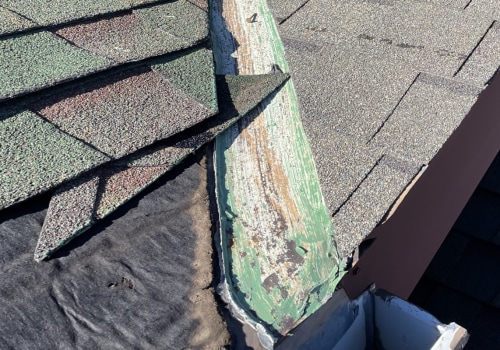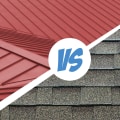No, metal roofs are no hotter than dark tile roofs made of asphalt or other standard materials, such as slate, for example. Metal is much cooler than a tile roof system. Regardless of the type of roofing material you decide to install over your home, attic ventilation and roof construction are important factors that can determine how well you balance your home's temperature. Attic and roof ventilation should try to expel solar heat from the attic to lower the cooling load of the house.
If the roof is well constructed, ventilated, and the attic has the right amount of insulation, the heat that the roof absorbs will not have a major effect on the temperature inside your home. Yes, a good ventilation system has cooling properties that will withstand the roofing material. The coating below the asphalt shingles consistently followed the surface temperature, dropping to 15 degrees below the outside temperature. But the temperature in the airspace below the metal roof never fell below the outside temperature.
Thus, while the surface temperatures of both the metal and the shingles remained neck to neck, the airspace under the metal roof was up to 20 degrees warmer than the airspace under the asphalt shingles. Whether you're putting a roof on a new home or your existing roof requires a total renovation, there are many materials available. But no matter what style of roof you have, metal roofs can be an attractive option due to their longevity, minimal maintenance, and energy efficiency. Material options include steel (galvanized, galvalume, or weather resistant), aluminum, copper, zinc, and tin.
Product types are vertical joints, preformed panels and granular coated panels. Style options allow you to have the look of shingles, slate, tile, milkshake, or vertical panels. Ensure your metal roofing product is tested, labeled, and listed with a testing organization, such as UL, FM Approvals, or Intertek, to meet rigorous wind, fire, and impact rating requirements. Also remember that installation may vary based on geographical location, manufacturer guidelines and, as a result of local building code requirements.
Although it may seem contradictory, metal roofs work well in hot climates. In fact, they keep a house much cooler than asphalt shingles, which could reduce peak cooling demand by 10-15%. Metal reflects sunlight, keeping it cooler indoors, while asphalt shingles, especially black ones, absorb heat from the sun, making the home much warmer. New white or light metal roofs with proper ventilation are better than old metal roofs, and special sealants can further cool the material.
To help keep your home cool in the summer, some metal roof installers will include Above Siding Ventilation (ASV). When choosing between a metal or tile room, you'll want to select a roofing material that insulates and protects from the harsh summer heat. Metal roofs offer incredible energy savings largely due to their type of material, but also due to their variety of finishes. Now you know the truth: metal roofs are really good for keeping your home cooler, as they reflect the sun's rays.
Apologies to metalheads: When it comes to roofing system components, there's more to it than metal. Metal roofs are a more difficult material to install properly, leading to a higher price. Useful information for homeowners, building owners, and anyone interested in metal roofing and cladding. Metal roofs may be a little less attractive option in terms of aesthetics, but they will serve you better when it comes to home heat management.
Lighter colors tend to be more reflective and are usually the right choice when it comes to choosing an energy-saving color for your metal roof. Whether they consist of the most popular steel and aluminum or the more expensive copper and stainless steel, metal roofs fit all types of commercial and housing architecture. Secondly, because a house with a metal roof will need much less electricity to cool down, energy costs over the years will be significantly reduced. In an exceptionally hot area like Alabama, homeowners can go one step further by choosing to use metal products that are built with integral air space that separates the back of the metal panel and the subfloor.
While asphalt shingles do a good job of keeping the house warm in winter, metal roofs can achieve the same result through the use of proper insulation. Now it's easy to see why metal roofs not only improve thermal comfort in homes without additional cooling systems, but also lower electrical energy consumption in residential buildings, where air conditioning is in operation. Metal roofs survive the elements well and remain intact when faced with high winds, hail and lightning; they are more likely to withstand extreme conditions, such as hurricanes. . While asphalt shingles do a good job of keeping the house warm in winter, metal roofs can achieve the same result through the use of proper insulation. Now it's easy to see why metal roofs not only improve thermal comfort in homes without additional cooling systems, but also lower electrical energy consumption in residential buildings, where air conditioning is in operation. Metal roofs survive the elements well and remain intact when faced with high winds, hail and lightning; they are more likely to withstand extreme conditions, such as hurricanes. .
.







